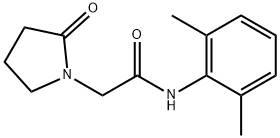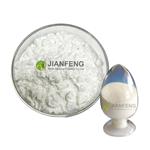Uses
analgesic, antiinflammatory
Uses
Nefiracetam improves post-ischemia evoke-nonconvulsive seizure by altering pro-inflammatory cytokines.
Definition
ChEBI: Nefiracetam is an organooxygen compound and an organonitrogen compound. It is functionally related to an alpha-amino acid.
Biological Activity
Cognitive enhancer that displays various pharmacological effects. Activates L/N-type calcium channels, cholinergic, monoaminergic and GABAergic systems. Displays potent neuroprotective action in the retinal ischemia-reperfusion model in vivo .
Mechanism of action
The mechanisms of nefiracetam seem to be linked back to two pathways. One of these pathways prolongs the opening of calcium channels (tied into PKA and a Gi/o protein), which enhances the signalling of a receptor independent of the synapse. The other pathway seems to be tied into PKC and CAMKII, which then augments signalling through cholinergic receptors (which then releases most excitatory neurotransmitters from the presynaptic level, like nicotine). The former pathway (calcium channels) appears critical for long-term potentiation, whereas the latter pathway (PKC/CAMKII) appears vital for neuronal signal enhancement. Some other minor pathways include being a partial agonist at the glycine binding site of the NDMA receptor (may enhance signalling when there are subpar levels of glycine but attenuates excessive signalling) and increasing affinity of the muscarinic acetylcholine receptors for its ligand, acetylcholine.







